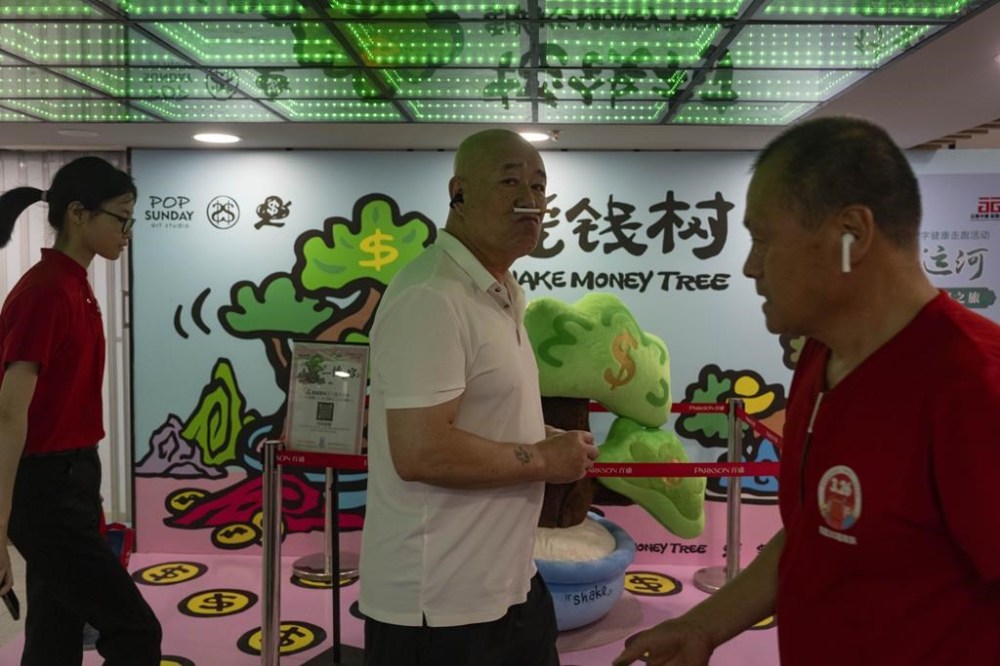China cuts 1-year benchmark rate and doubles subsidies for EVs in its ‘cash for clunkers’ program
Advertisement
Read this article for free:
or
Already have an account? Log in here »
To continue reading, please subscribe:
Monthly Digital Subscription
$0 for the first 4 weeks*
- Enjoy unlimited reading on winnipegfreepress.com
- Read the E-Edition, our digital replica newspaper
- Access News Break, our award-winning app
- Play interactive puzzles
*No charge for 4 weeks then price increases to the regular rate of $19.00 plus GST every four weeks. Offer available to new and qualified returning subscribers only. Cancel any time.
Monthly Digital Subscription
$4.75/week*
- Enjoy unlimited reading on winnipegfreepress.com
- Read the E-Edition, our digital replica newspaper
- Access News Break, our award-winning app
- Play interactive puzzles
*Billed as $19 plus GST every four weeks. Cancel any time.
To continue reading, please subscribe:
Add Free Press access to your Brandon Sun subscription for only an additional
$1 for the first 4 weeks*
*Your next subscription payment will increase by $1.00 and you will be charged $16.99 plus GST for four weeks. After four weeks, your payment will increase to $23.99 plus GST every four weeks.
Read unlimited articles for free today:
or
Already have an account? Log in here »
Hey there, time traveller!
This article was published 24/07/2024 (482 days ago), so information in it may no longer be current.
BANGKOK (AP) — China ratcheted up its effort to reinvigorate its slowing economy Thursday by unexpectedly cutting a key policy rate and also doubling subsidies for electric vehicles bought to replace older cars.
The People’s Bank of China said it cut its lending rate for one-year medium term policy loans by 20 basis points to 2.3%. That is the biggest rate cut since the world’s second-largest economy was slammed by the COVID-19 pandemic in 2020.
The rate on 7-day loans was reduced to 1.7%.

Major state-run banks cut deposit rates, meanwhile, to relieve pressure on their finances, reducing the rate paid on one-year fixed deposits by 10 basis points to 1.35%, the official Xinhua News Agency reported, citing official rates released Thursday by the country’s “Big Four” banks: Industrial and Commercial Bank of China, Agricultural Bank of China, Bank of China and China Construction Bank.
The banks cut deposit rates three times last year and this was the first reduction for 2024, it said. Earlier this week, the central bank cut several of its other lending rates, sticking to a cautious approach to stimulating the economy.
But while lower deposit rates may be good for the bank’s balance sheets they won’t encourage more consumer spending — the one thing most economists agree is needed to help revive growth that has been falling for years and was hit especially hard by a downturn in China’s property sector.
“Banks are already passing on lower deposit rates to savers: which will do nothing to encourage spending in the current environment, and people will instead save even more to generate the same return they were earning before,” RaboResearch said in a commentary.
China’s economy expanded at a 4.7% annual rate in the last quarter, down from 5.3% in January-March.
Thursday’s moves coincided with a downturn in world stocks that extended losses in Chinese markets that have swooned this year while share prices soared in many other countries. Hong Kong’s Hang Seng index sank 1.8% and the Shanghai Composite index lost 0.5%.
The flurry of rate cuts this week followed a major policy-setting meeting of the ruling Communist Party last week that laid out ambitious plans for reforms in many areas of the economy but did not spell out any specific plans for stimulus driven by government spending.

The planning meeting focused on mapping out long-term goals but also emphasized short-term targets, Nicholas Yeo of abrdn, formerly Standard Life Aberdeen plc, said in a report.
“This was unusual, but positive, as this could be an indication of the authorities’ growing awareness of the need to address the country’s lagging economic growth,” he said.
Mostly, the party has opted for fine-tuning and increasing investments in advanced and green technologies to help spur growth during a prolonged downturn in the property sector that has been dragging on the economy.
Reiterating earlier pledges to ramp up a program aimed at getting Chinese families to scrap old cars, appliances and even housing, the National Development and Reform Commission issued details on subsidies and funding.
The increases in subsidies for EVs come at a time when the U.S and some other countries are investigating such state support for the auto industry, and in some cases raising tariffs to protect their own manufacturers.
It said purchases of eligible vehicles who replace fuel passenger cars or EVs made before April 30, 2018, would get subsidies of 20,000 yuan (about $2,750) while the subsidy for fuel passenger cars with liters of 2.0 or less would be 15,000 yuan (nearly $2,100).
For some trucks, the average subsidy would be 80,000 yuan ($11,000).

Subsidies for new energy-efficient appliances such as refrigerators, TVs, washing machines, air conditioners and water heaters, among others, would be 15% of the sales price, up to 2,000 yuan ($275), the statement on the NDRC website said.
The NDRC also detailed subsidies for replacing old ships, trucks, tractors and other equipment.
Beijing plans to spend tens of billions of yuan (billions of dollars) on the program and on beefing up recycling programs to handle the program intended to generate demand for a wide array of products and materials.


